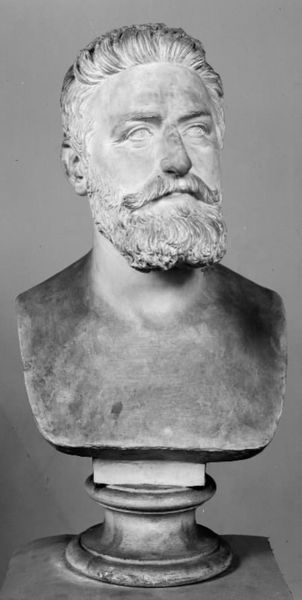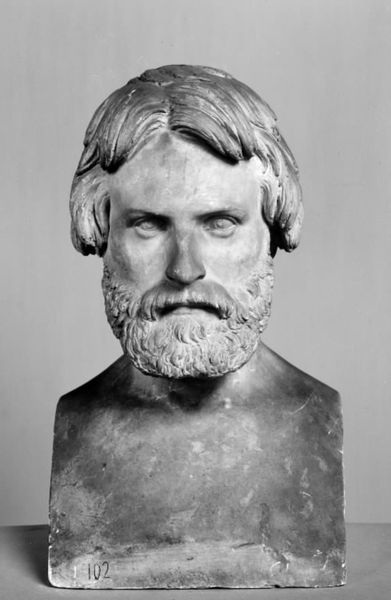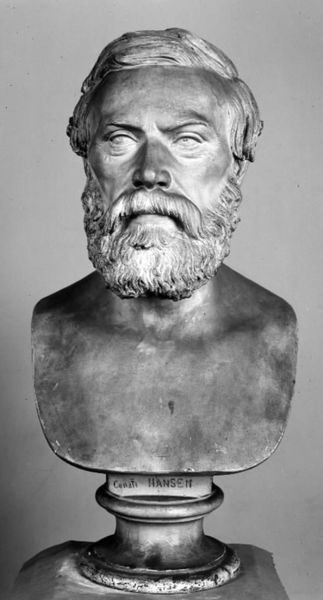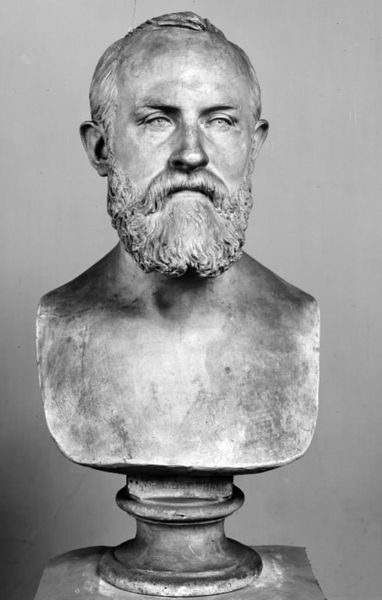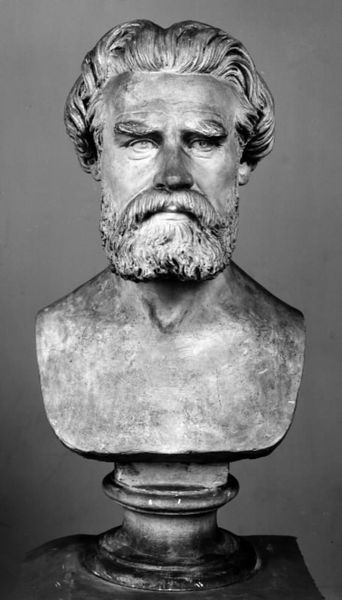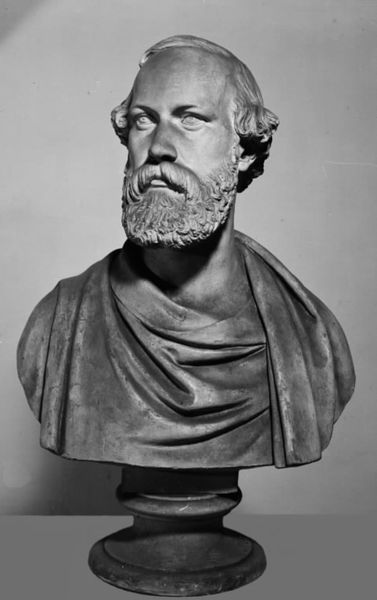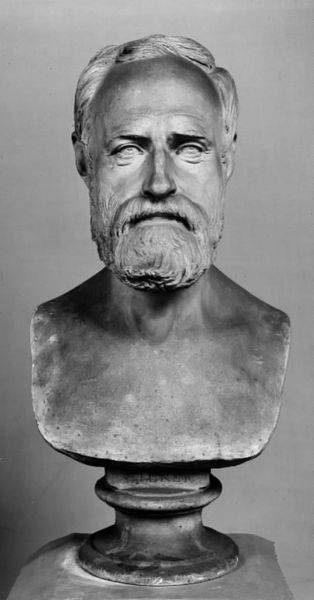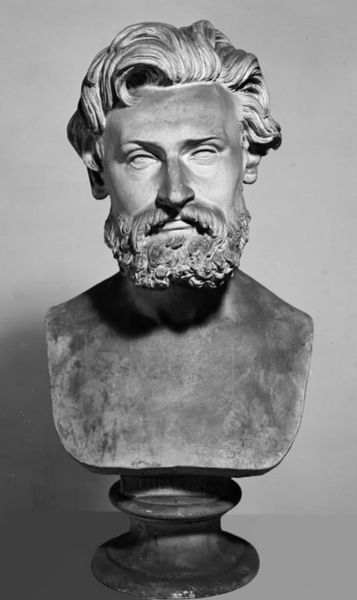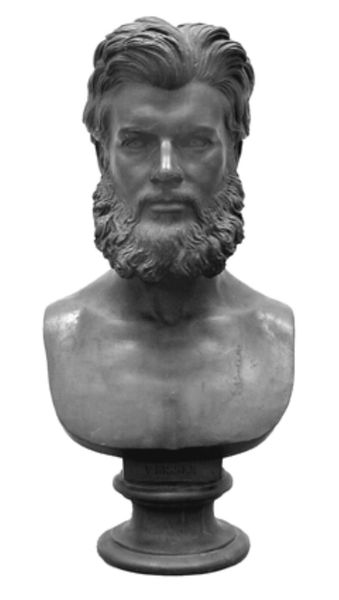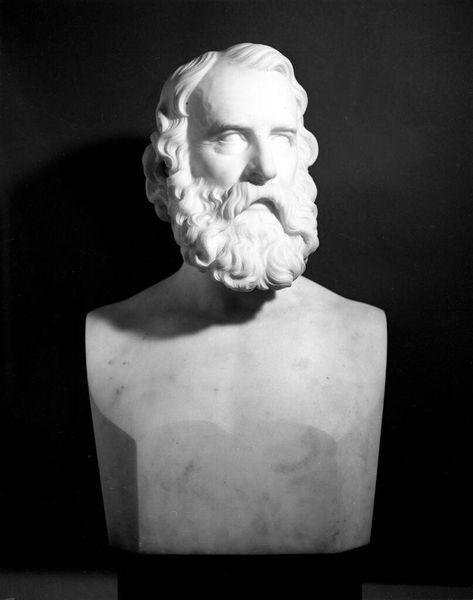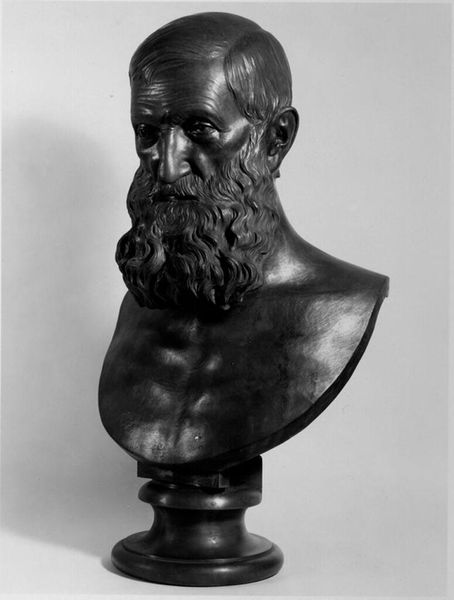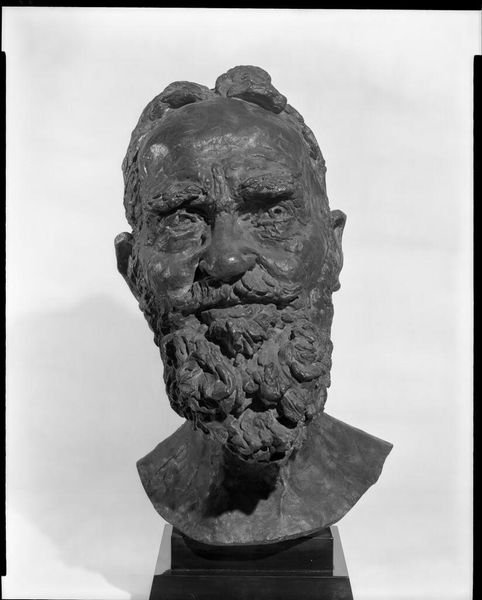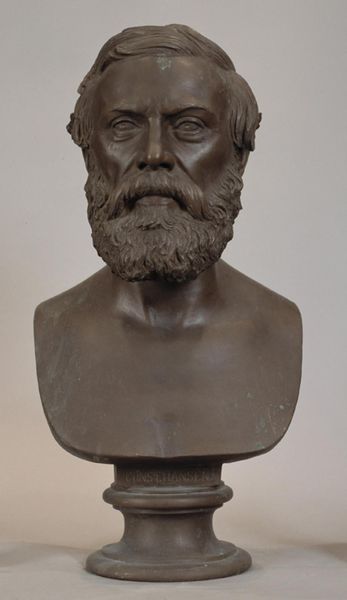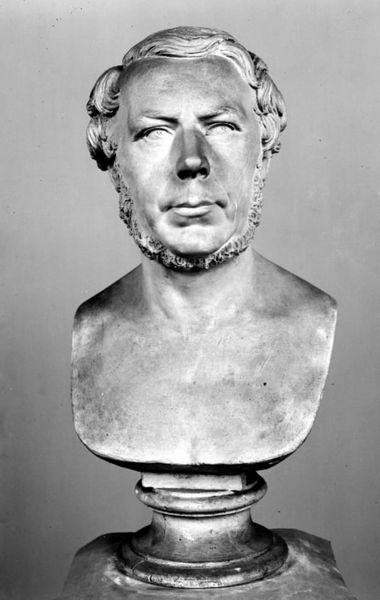
Dimensions: 65.4 cm (height) (Netto)
Editor: So this is "Billedhuggeren Vilhelm Bissen," a marble sculpture from 1862 by H.W. Bissen. The detail in the beard is remarkable. I'm struck by the sitter's intense gaze. What do you find most interesting about this piece? Curator: It's fascinating how neoclassical portraiture like this operated within a specific social and cultural landscape. This bust served not just as a likeness, but as a marker of status and a contribution to national artistic identity. Consider where this sculpture was originally displayed. How did its setting contribute to its meaning? Editor: Presumably a museum or private collection to emphasize Vilhelm Bissen's importance? Curator: Precisely. The Danish Golden Age saw the construction of national identity linked to artistic figures. Creating a lineage of great artists meant celebrating and legitimizing a cultural moment. Why do you think portraiture, particularly busts, were such a powerful tool for this purpose? Editor: Because they seem to immortalize the individual, turning them into icons. It’s like saying, ‘Remember this person and what they stood for.’ And making it from marble like ancient sculptures of Roman emperors? Curator: Exactly! The material itself and the artistic style reinforced this sense of permanence and importance. Think of the statement it made about Danish artistic achievement when placed alongside, say, works from other nations. What message does that project to the world? Editor: It creates a sense of national pride, suggesting Danish artists were just as skilled, just as important. I never considered a bust could carry so much weight. Curator: Indeed. Examining these pieces critically helps us unpack not just artistic talent but the deliberate construction of cultural narratives and national identity.
Comments
No comments
Be the first to comment and join the conversation on the ultimate creative platform.
